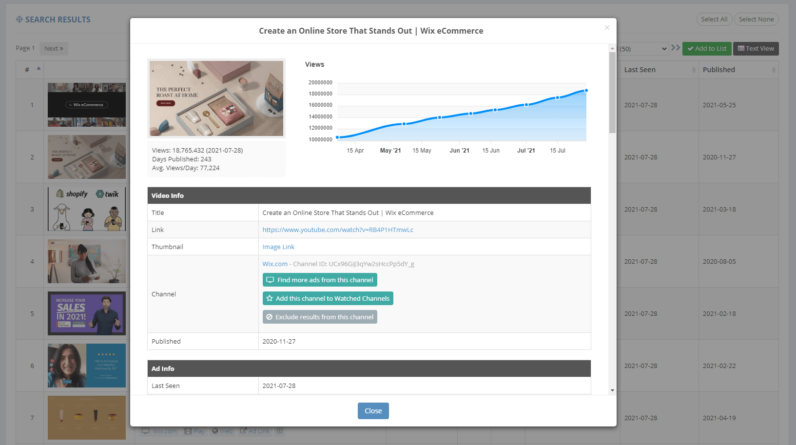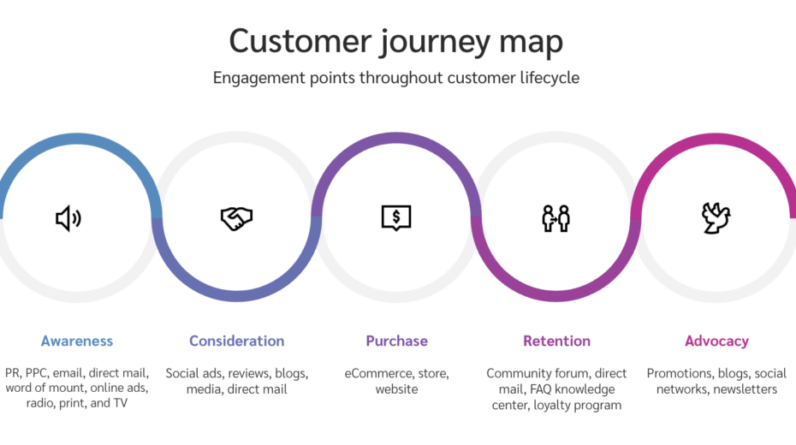
If you want to stay ahead in the ever-evolving world of advertising, it’s time to start optimizing your campaigns for voice search and smart speakers. With the rise of virtual assistants like Siri and Alexa, consumers are increasingly using voice commands to search for products and services. This means that traditional advertising methods may no longer be as effective as they once were. In this article, we will explore the key strategies and techniques you can use to ensure your advertising campaigns are optimized for voice search and smart speakers, helping you reach a wider audience and maximize your marketing efforts. Get ready to revolutionize your advertising game and meet the needs of the modern consumer.
Understanding Voice Search and Smart Speakers
What is voice search?
Voice search is a technology that allows users to perform internet searches by speaking their queries aloud instead of typing them into a search engine. It is commonly used on mobile devices, smart speakers, and other voice-activated devices. Voice search utilizes natural language processing and voice recognition technology to understand and interpret spoken commands.
What are smart speakers?
Smart speakers are voice-activated devices that use artificial intelligence to process and respond to voice commands. They are equipped with virtual assistants like Alexa, Google Assistant, or Siri, which can perform a variety of tasks such as playing music, setting reminders, providing weather updates, and answering questions. Smart speakers are typically connected to the internet, allowing users to access a wide range of information and services through voice commands.
Why are they important for advertising campaigns?
The increasing popularity and widespread use of voice search and smart speakers have significant implications for advertising campaigns. As more people rely on voice search for information and assistance, businesses have an opportunity to reach their target audience through voice-activated devices. By optimizing advertising campaigns for voice search and smart speakers, companies can increase their visibility and connect with potential customers in a more interactive and personalized way.
Researching Voice Search Trends
Identifying popular voice search queries
To optimize advertising campaigns for voice search, it is crucial to identify the popular voice search queries related to your business or industry. By understanding the specific questions and phrases that users commonly speak when conducting voice searches, you can create ad content that directly addresses their needs and aligns with their search intent. Research tools and analytics platforms can help identify the most frequently asked questions and popular keywords used in voice searches.
Analyzing user behavior on smart speakers
Smart speakers provide valuable data about user behavior and preferences. By analyzing user interactions with smart speakers, businesses can gain insights into the types of queries users make, the frequency and length of interactions, and the actions taken after receiving voice responses. This data can inform the optimization of advertising campaigns, allowing for targeted and tailored ad content that resonates with the specific interests and goals of the target audience.
Examining voice search patterns across different demographics
Understanding voice search patterns across different demographics is essential for effective advertising campaign optimization. Different age groups, geographic locations, and user segments may have distinct voice search habits and preferences. By examining these patterns through demographic analysis, businesses can adapt their ad strategies to better align with the needs and expectations of specific user groups, increasing the chances of delivering relevant content and generating meaningful engagement.

Optimizing Ad Copy for Voice Search
Creating conversational ad copy
When optimizing ad copy for voice search, it is important to adopt a conversational tone that mirrors the way people naturally speak. Voice searches often take the form of complete sentences or questions, so ad copy should be written in a conversational manner that provides direct and concise answers. By utilizing language that aligns with the user’s natural speaking style, ads can feel more personalized and engaging, increasing the likelihood of capturing the user’s attention.
Incorporating natural language and long-tail keywords
Natural language and long-tail keywords play a crucial role in optimizing ad copy for voice search. Instead of focusing solely on short and generic keywords, incorporating longer and more specific phrases that match the way users speak can enhance the relevance and visibility of ads. Long-tail keywords are often more specific and have less competition, making them valuable for voice search optimization. By researching and incorporating relevant long-tail keywords, ad copy can better align with user queries and improve ad performance in voice searches.
Using question-based ad formats
Question-based ad formats are an effective way to optimize advertising campaigns for voice search. These formats align with the way users typically phrase their voice queries, allowing ads to directly address user questions. By presenting ad content in the form of questions and providing concise and relevant answers, businesses can position themselves as a helpful resource and increase the chances of capturing user attention and engagement. Question-based ad formats can also enhance the conversational nature of voice interactions, further personalizing the user experience.
Adapting Ad Formats for Smart Speakers
Designing audio ads
Smart speakers primarily rely on voice interactions, making audio ads a powerful and effective way to reach users on these devices. Designing compelling and engaging audio ads can capture the user’s attention and create a memorable brand experience. Consider incorporating high-quality sound effects, music, and voice-over talents to create an immersive and captivating audio ad. It is important to ensure that the audio content aligns with the brand image and messaging to deliver a consistent and impactful advertising experience.
Utilizing interactive voice ads
Interactive voice ads leverage the capabilities of smart speakers by allowing users to actively engage with the ad content through voice commands. These ads can include interactive quizzes, games, or choose-your-own-adventure experiences, providing a more engaging and personalized user experience. By encouraging users to interact with the ad, businesses can capture valuable insights and create a memorable brand experience that enhances user engagement and increases the chances of conversion.
Tailoring visuals for smart displays
Some smart speakers are equipped with visual displays, adding an extra layer of engagement and interactivity to the advertising experience. When optimizing ad formats for smart displays, businesses should consider incorporating visually appealing and informative elements. This can include relevant images, graphics, or even short videos that accompany the audio content. By creating visually appealing ads that complement the audio experience, businesses can deliver a more immersive and memorable advertising experience.

Leveraging Local SEO for Voice Search
Optimizing business listings for voice search
Local SEO plays a crucial role in optimizing advertising campaigns for voice search, particularly for businesses targeting local customers. Optimizing business listings on platforms like Google My Business and Bing Places for Business can increase the likelihood of appearing in voice search results for local queries. Businesses should ensure that their listings are accurate, up-to-date, and include relevant information such as address, phone number, and business hours. This improves the chances of being selected as the voice assistant’s preferred result for local queries.
Including location-specific keywords
Including location-specific keywords in ad copy and content can significantly improve visibility in voice searches. Users often include their location when performing voice search queries related to local services or businesses. By incorporating location-specific keywords in ad copy, businesses can enhance the relevance and visibility of their ads for users searching within a specific geographic area. This can help target a local audience and increase the chances of capturing customer attention and generating conversions.
Encouraging user reviews and ratings
User reviews and ratings can influence the visibility and credibility of businesses in voice search results. Positive reviews and high ratings indicate trustworthiness and quality, making businesses more likely to be recommended by voice assistants. Encouraging customers to leave reviews and ratings on platforms like Google Reviews or Yelp can help boost visibility and increase the chances of being recommended in voice search results. Promoting positive customer feedback also improves the overall reputation and perception of the brand.
Maximizing Featured Snippets and Knowledge Graph
Providing concise and structured answers
Featured snippets are concise and structured pieces of information that appear at the top of search engine result pages, directly answering user queries. To maximize the chances of appearing as a featured snippet in voice search results, businesses should focus on providing clear, concise, and structured answers to frequently asked questions related to their industry or products/services. By crafting content that directly addresses these questions, businesses can increase the chances of being selected as the voice assistant’s preferred answer.
Optimizing content for featured snippets
Optimizing content for featured snippets involves structuring information in a way that is easily digestible and relevant for voice search queries. Businesses should consider using bullet points, headings, and subheadings to organize content and highlight important information. This makes it easier for voice assistants to extract and present the information as a featured snippet. Additionally, using schema markup can provide additional context and metadata to search engines, increasing the chances of being selected as a featured snippet for voice searches.
Leveraging schema markup for enhanced visibility
Schema markup is a standardized data format that provides additional context and metadata to search engines. By leveraging schema markup, businesses can enhance the visibility of their content in voice search results. Schema markup allows businesses to provide detailed information about their products, services, and other relevant details, making it easier for voice assistants to interpret and present the information accurately. Implementing schema markup can improve the chances of being chosen as a featured snippet and increase overall visibility in voice search results.
Redefining Targeting and Audience Segmentation
Identifying target demographics for voice search
To optimize ad campaigns for voice search, it is essential to identify the target demographics that are most likely to utilize voice search technology. Different age groups, occupations, and geographic locations may have varying levels of adoption and usage when it comes to voice search. By conducting thorough market research and analyzing user data, businesses can refine their targeting strategies and ensure their ad campaigns align with the preferences and behaviors of their target audience.
Creating personalized ad experiences
Personalization is a key aspect of optimizing advertising campaigns for voice search. By leveraging user data and insights, businesses can create personalized ad experiences that resonate with individuals on a more individual level. This can include tailoring ad content, offers, and recommendations based on individual preferences, past behavior, and purchasing history. By delivering personalized ad experiences, businesses can increase the relevance and effectiveness of their campaigns and foster stronger connections with their target audience.
Leveraging user data for improved targeting
User data is a valuable resource for optimizing advertising campaigns for voice search. By analyzing user data, businesses can gain insights into user preferences, behavior, and demographics. This data can be used to refine targeting strategies, identify trends and patterns in user behavior, and create more effective and targeted ad campaigns. Leveraging user data allows businesses to optimize their ad delivery, messaging, and creative content to align with the specific needs and preferences of their target audience.
Monitoring Ad Performance and Voice Search Analytics
Tracking conversions and user interactions
Tracking conversions and user interactions is essential for evaluating the performance of advertising campaigns optimized for voice search. By monitoring the conversion rates, click-through rates, and user interactions with ads, businesses can gain insights into the effectiveness and impact of their campaigns. This data can help identify areas for improvement, optimize ad placements and messaging, and make data-driven decisions to enhance overall campaign performance.
Analyzing voice search queries in advertising campaigns
Analyzing voice search queries within advertising campaigns provides valuable insights into user behavior, intent, and preferences. By examining the specific voice queries that trigger ad impressions or interactions, businesses can understand the context and relevance of their ad placements. This analysis can help refine keyword targeting, ad copy, and the overall ad strategy to better align with user needs and improve campaign performance in voice search.
Measuring ROI and adjusting strategies accordingly
Measuring the return on investment (ROI) is crucial in determining the success and effectiveness of advertising campaigns. By tracking the results of voice search-optimized campaigns and comparing them to the invested resources, businesses can assess the overall impact and value generated. Measuring ROI allows businesses to identify areas of improvement and make data-driven decisions to optimize their strategies. Adjusting targeting, messaging, or ad formats based on ROI analysis can ensure that resources are allocated efficiently and effectively.
Testing and Experimenting with Voice Advertising
A/B testing different ad formats and variations
A/B testing is an essential practice when optimizing ad campaigns for voice search. By creating multiple variations of ad formats, content, or messaging, businesses can compare their performance against each other to determine the most effective approach. A/B testing allows businesses to identify which specific elements or combinations drive better results in voice search campaigns. By continuously experimenting and refining ad variations, businesses can optimize their campaigns based on the insights gained from testing.
Integrating voice-activated call-to-actions
Integrating voice-activated call-to-actions in ad campaigns can increase user engagement and interaction. By including prompts such as “Ask your device for more information” or “Say ‘yes’ to book now,” businesses can encourage users to take specific actions through voice commands. Voice-activated call-to-actions provide a seamless transition from the ad experience to voice interaction, improving the overall user experience and increasing the chances of conversion. Testing different variations of voice-activated call-to-actions can help determine the most effective approach for engaging users and driving desired outcomes.
Exploring partnerships and voice-enabled sponsorships
Exploring partnerships and voice-enabled sponsorships can provide unique opportunities to reach a wider audience through voice search and smart speaker platforms. By partnering with popular voice assistant applications, podcasters, or other voice-enabled platforms, businesses can increase their brand exposure and reach new audiences. These partnerships can include voice-enabled ads, sponsorships, or collaborations that deliver relevant and engaging content to users. Testing different partnership opportunities and measuring the impact can help determine the value and effectiveness of these marketing strategies.
Adopting Voice Search Optimization as a Continuous Process
Staying updated with voice search technology
Voice search technology is continuously evolving, and it is essential for businesses to stay updated with the latest advancements and developments. By keeping up with industry news, attending conferences, and engaging in continuous learning, businesses can stay ahead of the curve and optimize their advertising campaigns effectively. Being aware of emerging trends or changes in voice search technology allows businesses to adapt their strategies and take advantage of new opportunities.
Adapting to evolving user behaviors
User behaviors and preferences in voice search are constantly evolving. Businesses must adapt their advertising strategies to align with changing user behaviors to remain relevant and effective. Keeping a close eye on user data and analytics can provide insights into shifting user expectations and patterns. By understanding and adapting to these changes, businesses can tailor their ad campaigns to match the evolving user behaviors, delivering more engaging and impactful experiences.
Exploring voice-specific advertising platforms
As the popularity of voice search and smart speakers continues to grow, new platforms and opportunities for voice-specific advertising are emerging. Businesses should explore and experiment with these platforms to leverage the full potential of voice search optimization. This may include partnering with voice-enabled apps, creating ads specifically designed for voice search platforms, or leveraging technologies and tools that enhance voice search performance. By exploring and testing voice-specific advertising platforms, businesses can stay at the forefront of voice search optimization and maximize the impact of their ad campaigns.
In conclusion, optimizing advertising campaigns for voice search and smart speakers requires a comprehensive approach that includes understanding voice search technology, researching trends, optimizing ad copy and formats, leveraging local SEO, maximizing featured snippets, redefining targeting, monitoring performance, testing different strategies, and adopting voice search optimization as a continuous process. By following these steps and staying up to date with the latest advancements, businesses can effectively reach their target audience through voice-activated devices and unlock the full potential of voice search advertising.





